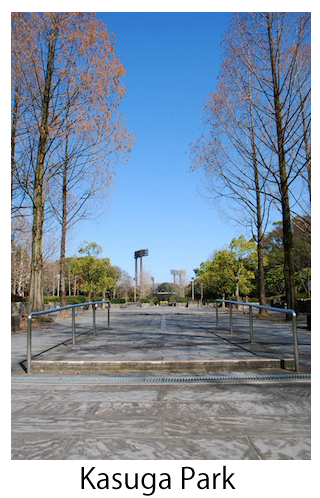Fukuoka City

Fukuoka City Subway
(provided by Fukuoka City)
The city of Fukuoka is the capital of Fukuoka Prefecture. Consequently it has a larger population (> 1.5 m) than any other city on the island of Kyushu and acts as the primary political and economic center of the island. Fukuoka city has a large and busy international airport with direct flights possible to destinations throughout Asia and even to Europe. The central train station is known as Hakata station which in addition to its numerous local connections is the terminus of the infamous Japanese Shinkansen Bullet train system. This makes Fukuoka city an incredibly accessible city.

Tochoji Temple, Hakata, Fukuoka
(provided by Fukuoka City)
Historically, Fukuoka is one of the oldest cities in Japan, and was formally known as Na in the 3rd-cenury Chinese historiography, Sangouzhi. During the 7th century, the city prospered and became the largest trading center and cosmopolitan city in Japan. There are many historic landmarks such as shrines and temples, and some festivals have continued for over a thousand years until now.
The living costs such as housing and food are relatively low, when compared to Japans other major cities such as Tokyo and Osaka. A rich dietary culture has evolved and various, inexpensive, and delicious foods, especially seafood’s, are well-known. Fukuoka is not only a big city having good access to transportation but also a garden city. MONOCLE, a business magazine in from the UK, has ranked Fukuoka in the top 20 of livable cities in the world from 2008 (12th in 2013).
- ▶ Fukuoka and Hakata tourist information site “Yokanabi”
- ▶ Fukuoka Convention and Visitors Bureau
A Long History of Exchange with Asian Neighbors
In addition to their nature and general amenities, the cities of Fukuoka and Kasuga which include Ito Campus and Chikushi Campus are known as places with a long history of exchange with Asian countries. Dotted around these areas are various ruins containing ancient remains. In and around the campuses numerous archaeological remains have been found which give an insight into the life of the local ancient peoples. Artifacts such as stone tools and pottery have been unearthed dating back to before the Common Era as well as various tunnels and burial accessories from the 5th to 6th centuries, the 8th century relics of iron-making, wood strips with letters written on them, and so on. The new campus was carefully planned to preserve such academically valuable remains for future generations. You can see several examples of the materials discovered during the construction of Ito Campus in the following link.


